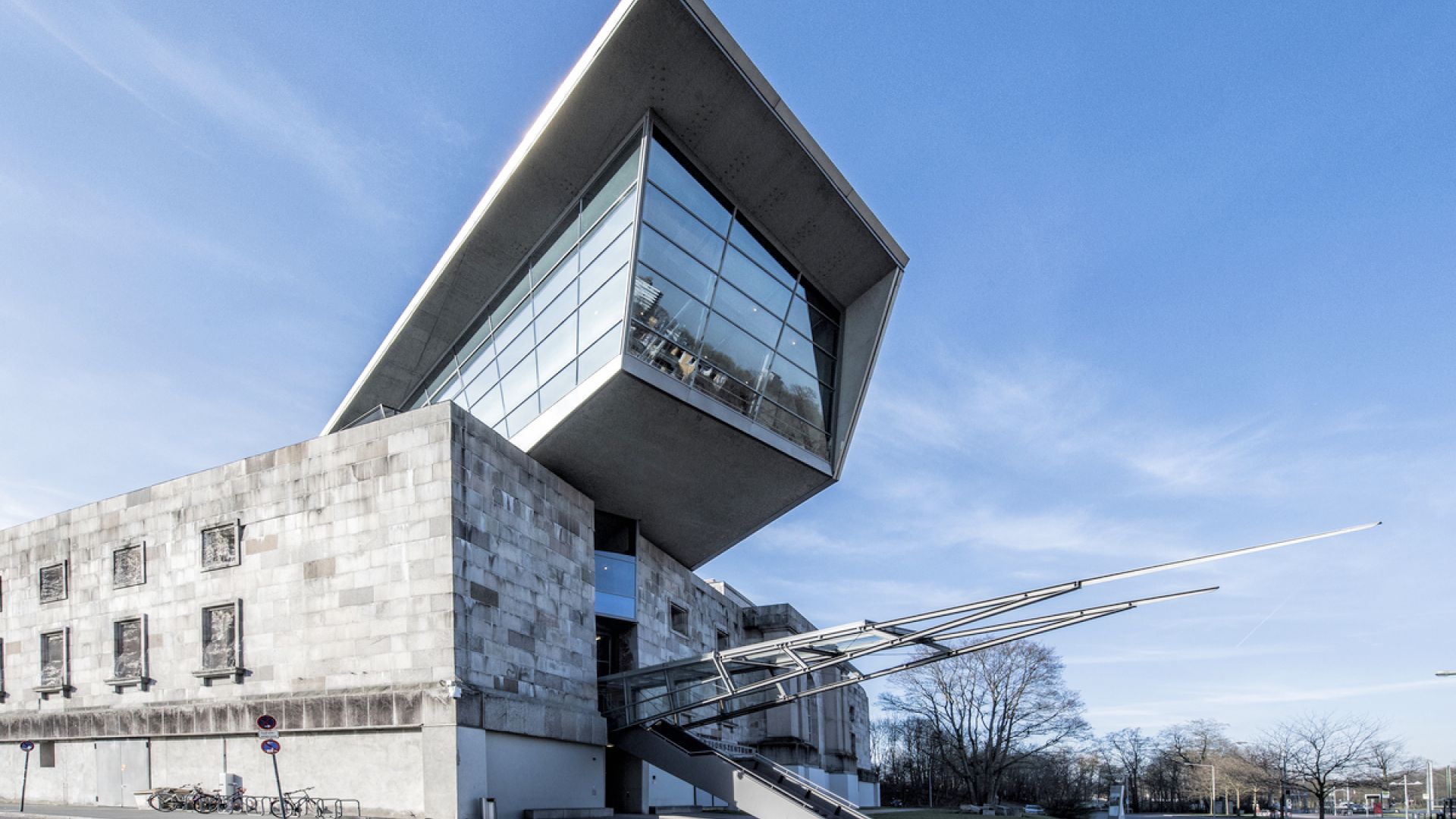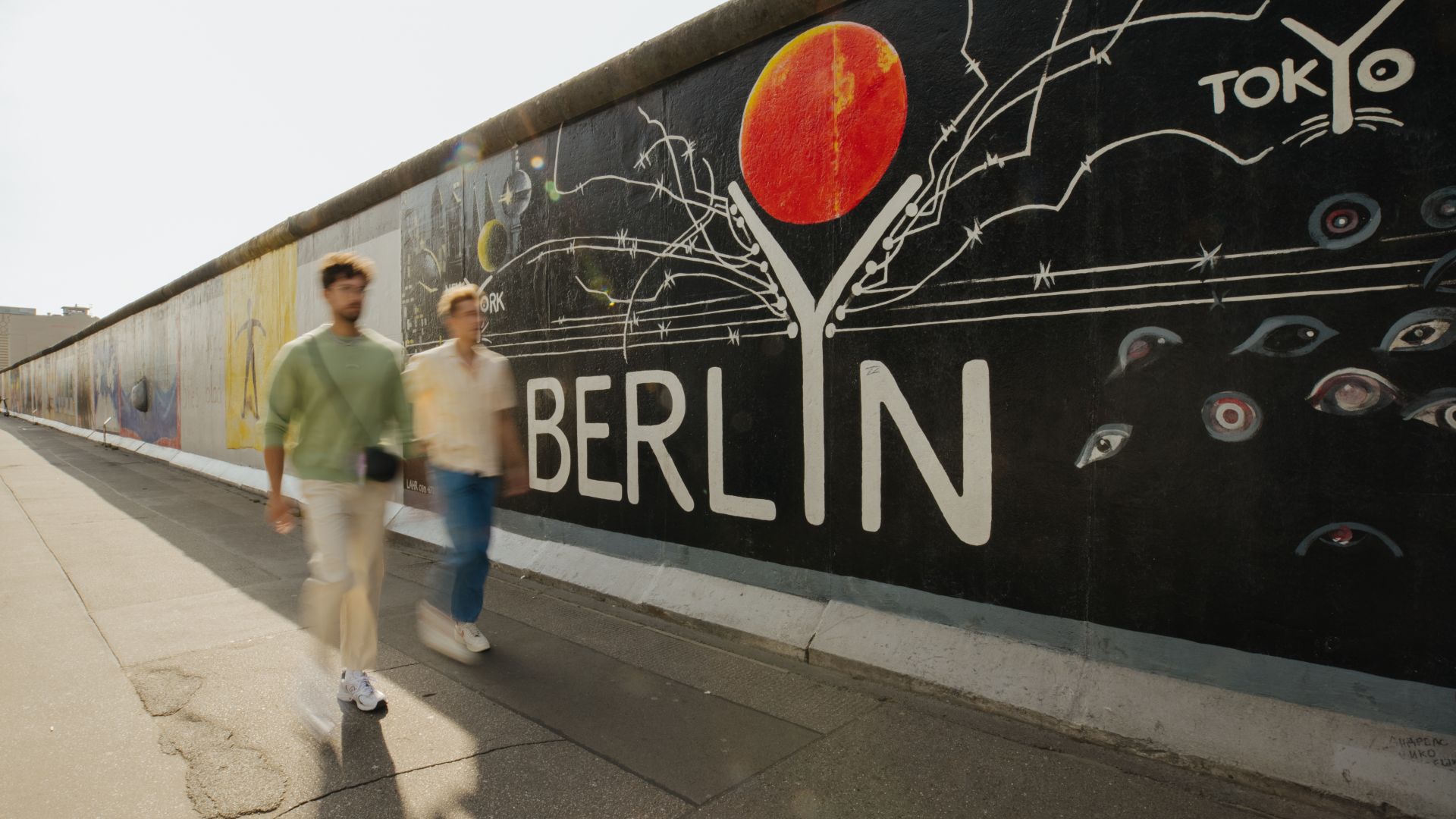Cities & Culture
Memorials to the National Socialist and GDR eras: lest we forget
They're anything but an easy day out but are popular nonetheless: high visitor numbers at special museums and memorials prove there's a great interest in information about the heinous crimes of the National Socialists and the unjust GDR regime.
Documentation Center Nazi Party Rally Grounds: monumental Nazi buildings
The National Socialists' megalomania is demonstrated nowhere more impressively than on the more than ten square kilometre Reichsparteitagsgelände in the south-east of Nuremberg. The guiding principle at the time was that everything should appear sublime, powerful, awe-inspiring – such as the Zeppelin Field, the Zeppelin Grandstand and the extremely long parade route, where hundreds of thousands of people regularly cheered Hitler's propaganda shows in the 1930s. Under the direction of Albert Speer (Hitler's architect and armaments minister of the Nazi regime), even more grotesque things were planned, such as the world's largest stadium with space for 405,000 spectators. That plan didn't come to fruition; the congress hall reached "only" 39 metres high, instead of the planned 72 metres. Since 2001, the north wing of this gigantic, unfinished neoclassical building has been home to the Documentation Center. With its javelin-like structure of glass and steel, it already makes a visible statement from the outside. Inside, a permanent exhibition focused on the causes, contexts and consequences of Nazi tyranny until renovation work began in spring 2021. The old permanent exhibition is currently being replaced by an interim exhibition in the Great Exhibition Hall. After the major conversion and expansion, which is expected to be completed in 2025, topics related to Nuremberg will continue to be the focus, including the Nuremberg Laws of 1935, the Nuremberg Trial against those primarily responsible for Nazi crimes, and dealing with the National Socialist architectural heritage. On the grounds themselves, information boards provide context on the history of the site.
 Nuremberg: Nazi Party Rally Grounds documentation centre
©DZT (Florian Trykowski)
Nuremberg: Nazi Party Rally Grounds documentation centre
©DZT (Florian Trykowski)
Memorial Museum in the "Round Corner": insights into everyday life in the Stasi
Leipzig played a central role in the "Peaceful Revolution" that ultimately led to the collapse of the GDR. In autumn 1989, courageous citizens gathered not only in front of the Nikolai Church during their Monday demonstrations, but also in front of the building in which the district administration of the Ministry for State Security (MfS) had its headquarters for 40 years. Just a few months later, the Stasi was no more. And it didn't take long until a museum was set up in that very same"Round Corner",as the attractive house was known, thanks to its architectural curvature. The nice exterior deeply contrasts with what went on inside this building, though, which is made clear in the permanent exhibition, "Stasi –Power and Banality", which has remained unchanged for more than three decades, with numerous and unique exhibits on the history, structure and operations of the inhuman GDR secret service. You can also visit a prison cell. Everywhere, the surroundings have been largely preserved so that visitors can see, smell and feel the work environment of the past. Throughout the museum, which has been part of the European Cultural Heritage "Iron Curtain"since 2012, you'll find linoleum flooring, yellowish-brown wallpaper, folding grilles on the doors and windows, cable channels and old radiators.
Berlin Wall Memorial: from the building of the Wall to its fall
No other structure symbolises the division and reunification of Germany as strongly as the Wall, which was built in 1961 and fell in 1989, running right through the middle of the divided city. While its longest surviving section, the East Side Gallery on the Spree, offers colourful open air art, the memorial on Bernauer Strasse to the north is dedicated to documenting the dark history of the Wall – especially the many tragedies that occurred on the border between Berlin-Mitte and Wedding. 132 civilians lost their lives at the Wall, including people who threw themselves out of the windows of their houses in sealed-off East Berlin in order to reach the free West. This and more is the focus of the permanent exhibition "1961 | 1989. The Berlin Wall" at the Documentation Centre, which opened in 2010. There are other stations around the 1.4-kilometre-long memorial trail that follows the former border strip. The visitor centre explains which are which: original border installations, the Chapel of Reconciliation, the Window of Remembrance, which commemorates those who lost their lives on the Wall, the Border House, an exhibition in the neighbouring Nordbahnhof S-Bahn station, and the national memorial to the victims of the construction of the Wall and German division. An 80-metre long piece of borderland is enclosed by two six-metre high steel walls, with viewing slits allowing people to see into the death strip.
 Berlin: Couple at the Berlin Wall
©DZT (Julia Nimke)
Berlin: Couple at the Berlin Wall
©DZT (Julia Nimke)
Topography of Terror, Berlin: meticulous documentation of Nazi crimes
The heart of the horror of the Third Reich can be found on the grounds next to the Gropius Bau. The control centres of the Secret State Police (Gestapo), the Reichsführung SS, the SS Security Service (SD) and the Reich Security Main Office were located between Stresemannstrasse and Wilhelmstrasse. For an overview, a tour of the grounds is recommended. Audio guides and information desks with photos, documents and 3D graphics provide guidance on the area, which includes one of the last pieces of the Wall that ran there for 28 years, and its history. You can then get more intensive insights at the Documentation Center, opened in 2010. A permanent exhibition in the large, grey cube explores the question of how the bourgeois Germany of the 1920s could become a totalitarian power state. With display panels, large-format photographs and radio broadcasts from the time, five thematic areas inform visitors about the seizure of power and institutions of Nazi terror, the work of the SS, systematic persecution and extermination. The Gestapo headquarters' house prison is particularly disturbing, especially when you learn that politicians such as Kurt Schumacher (SPD) and Ernst Thälmann (KPD) or the jurist Helmuth James Graf von Moltke, founder of the Kreisau resistance group, suffered in the 38 individual cells.